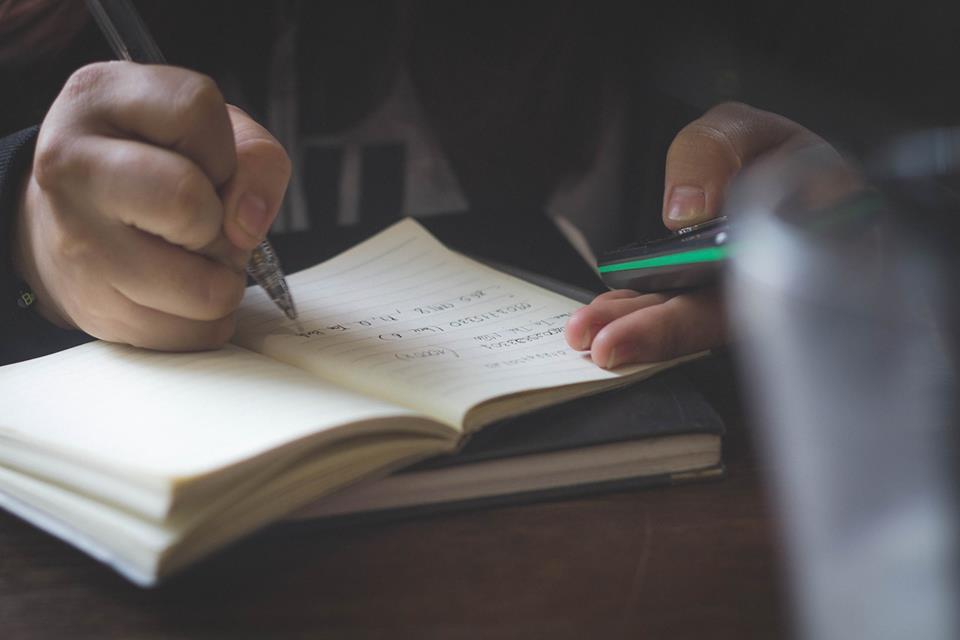“Studio-E” at Edgewood College is continuing. “I am not an artist.” seemed an odd use of paper, paint, time, talent. but it’s probably good. at some point, there will be a show, and everyone will scream “Oh, wonderful, how did you ever apply those paints and what were thinking when you did?” sorry, too much for me. where did I park my bike? did my wife ask me to pick up anything before coming home, that’s what’s in my mind. a quick look into the mind of a brain-damaged epilepsy “art” student.
While I believe it is wonderful to offer art programming to individuals who enjoy art, when I read his submission, I gathered that Alan is bothered by the presumptive and restricted activities people assume someone with his conditions would benefit from and enjoy. It seems to me that he can find commentaries about his art patronizing and he doesn’t always appreciate the “artist” identity. It seems as though he feels that he only has that label because the number of recreational activities offered to him are limited. His piece highlights to me how people who may not understand brain injury and epilepsy don’t understand the matters he cares about the most.
Let me tell you a little more about Alan. He is the person who taught me the beauty of a smile. When we first met, I didn’t know if he was capable of showing his teeth. He simply never did.
Alan is a brain injury survivor with epilepsy. He was hit by a drunk driver before I was even born. I know this, because on occasion he laments about the injustice of his situation. The person who hit him spent only a few months in prison while he was stuck with an injury that created a prison out of his own mind with a life sentence. By the time I met him decades after his injury, he already had a portion of his brain removed because evidently that was the “best” treatment for his intractable seizures at that time in his life.
The following metaphor about prisoners and people with brain injuries has always resonated with me. While prisoners are bound by physical walls, people with brain injury are constrained by mental walls. Because brain injuries can manifest in countless combinations depending on their regions and severity of damage, the impacts on different domains of well-being can be both catastrophic and chronic. I speak for myself and my brain injury peers who relate when I say that many of us live in our own personal h*ll. It’s frustrating not being able to engage with the rest of society in a “normal” way, and we often initially have many restrictions*.
One of Alan’s greatest restrictions is his inability to vocalize his thoughts in continuous statements. It can take him minutes to say one sentence and often there are many pauses between words. I remember when our friendship was first forming, he would start saying something, and it was like watching someone hit walls over and over again. I would sometimes witness him conceding to his condition where he would just stop bothering to finish his thoughts.
Alan is very intelligent and I can only imagine how frustrating it can be for him at times to be unable to express himself as he would like to. Yet, ironically, one time he commented at a support group about how my condition was a nightmare.
I remember being taken aback by his comment when he said it, but I realized what interesting humor and empathy people with brain injury can have within our own community. While we have diverse injuries and post-injury conditions, we share a dire situation and the difficult emotions and circumstances that come with our overwhelming state. We each perceived the other person’s circumstances to be worse than ours. As an amnesia patient, I gratefully thought to myself, “At least I can talk,” while Alan probably thought, “At least I know and remember my life.”
Alan and I both learned from each other. I supported him and some of our other friends at weekly Epilepsy Heart of Wisconsin meetings when I could, in addition to monthly brain injury support group. We picked up on each other’s strategies and nuances.
I would write things down so I wouldn’t forget them because at the time my memory was still developing and I was in overdrive all the time being a student pharmacist healing from a brain injury. Writing reminders was my mechanism to conserve my brain energy/effort/memory, sort of like an external hard drive. Alan would carry a book around with him, too, and I would make sure to pay attention to his writings. Sometimes instead of verbal communication, he started writing things out to me when he couldn’t get his words out. When we were at brain injury support group, I would make sure to be watchful of his musings and vocalize to the rest when he had something to say.
One time at group, I shared with the rest of our peers and supporters how gorgeous Alan’s smile is and how it can brighten anyone’s day. What I said was 100% true. I noticed how after that particular group he smiled a lot more, and so did many of our other peers. How blessed I am to have such beautiful brain injury peers. I hope with my abilities, I can use my words and actions to improve the lives of people with brain injury and beyond.
Authors: Alan Noblitt & Jing Wu
*This is not true for me anymore…I have either escaped or am in a remission which I hope lasts for a very long time.

Please connect with us if you are seeking support or hoping to learn more about being part of a Supportive, Inclusive, Compassionate, and Kind community:
Join The MindReset!
Check out Events for support groups or live events:
- Follow The MindReset Facebook page
- Follow The MindReset Twitter
- Follow The MindReset Instagram
You are always welcome to connect directly with an individual from TMR at themindreset@gmail.com or (802) 377-MIND.


